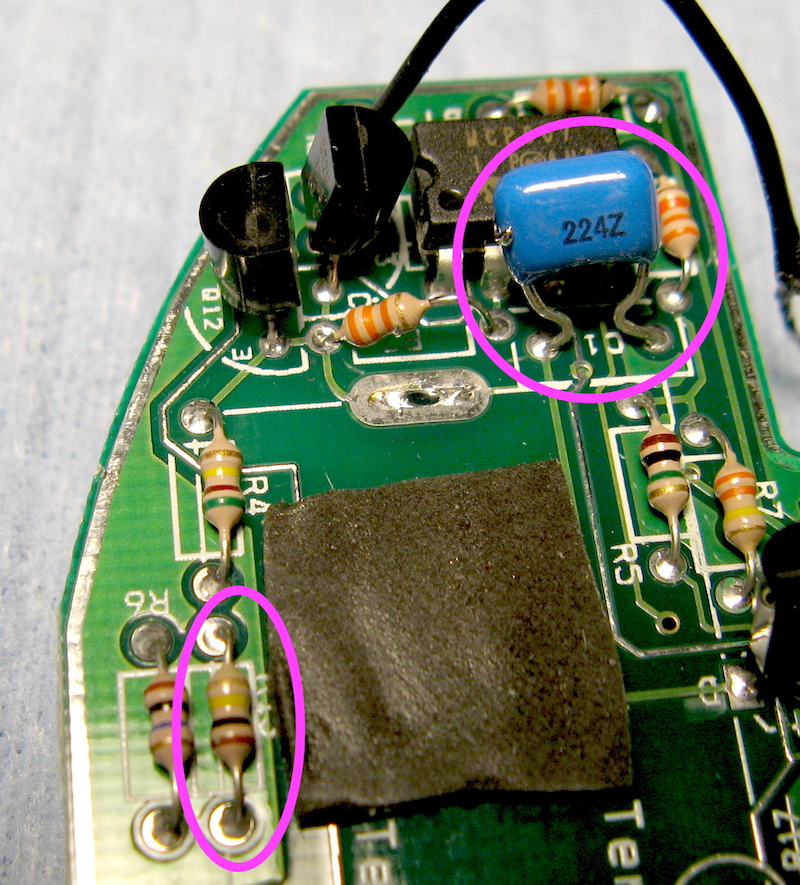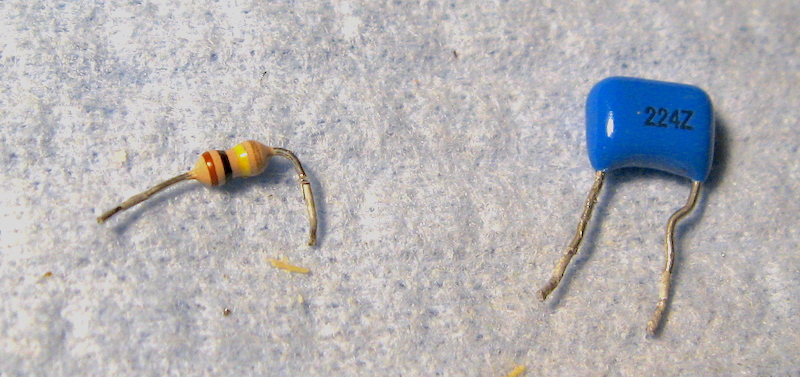At the other end of the scale, here is a minimalist way of getting the signal tester functionality, requiring only a capacitor and some hookup wire (also solder and a soldering iron, but presumably everybody here has those). It requires a slight modification of the pedal and is not portable from one pedal to another (until you are done with it and de-solder it from your pedal under test), but I offer this as a way to help out the new builder who may not have lots of spare parts lying around (as I did when I cobbled together the widget in the opening post).
(1) Get a capacitor. Best would be a non-polarized cap in the 0.01 uF (10 nF) to 1.0 uF (1000 nF) range but go lower if you have to.
For this exercise I decided to raid an expired household device circuit board. I noted that one bulky cap was marked "224" so knew there was a good chance it would be ~ 220 nF and hence appropriate. (I also set my sights on grabbing a resistor in case I needed a pull-down to avoid "pops" when using the device; I noted that both the Bass Chorus and the Green Pony, two pedals as of this writing under "discussion" in troubleshooting threads, have 100 kohm in this role so I searched for the same on the board [brown-black-yellow], and, remarkably, one was nearby. Spoiler: In the end the "pops" did not bother me so I didn't bring the resistor into play, but it is still in some of my photos.)
Attachment:
 (16) to_be_harvested_2_sm.JPG [ 479.34 KiB | Viewed 6595 times ]
(16) to_be_harvested_2_sm.JPG [ 479.34 KiB | Viewed 6595 times ]
After encouraging my solder sucker with a few choice words, I had my parts. I have meters for measuring resistance and capacitance and the values were confirmed.
Attachment:
 (17) raw_fruit.JPG [ 207.67 KiB | Viewed 6595 times ]
(17) raw_fruit.JPG [ 207.67 KiB | Viewed 6595 times ]
(2) The original board-stuffer trimmed the leads, of course, so next I soldered on some lengths of buss wire (can use your own discarded trimmings, just as well) to make the components a little easier to wrangle.
Attachment:
 (18) new leads.JPG [ 223.35 KiB | Viewed 6595 times ]
(18) new leads.JPG [ 223.35 KiB | Viewed 6595 times ]
There seems to be a limit on the number of photos per post, so I will pick up the story here in my next installment.



